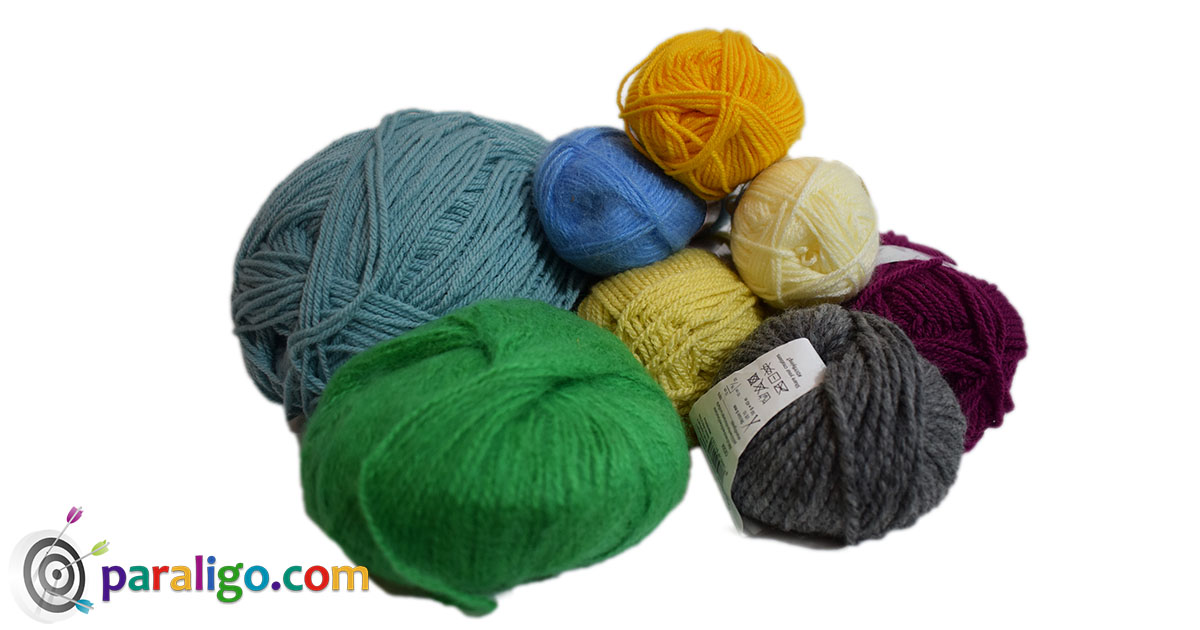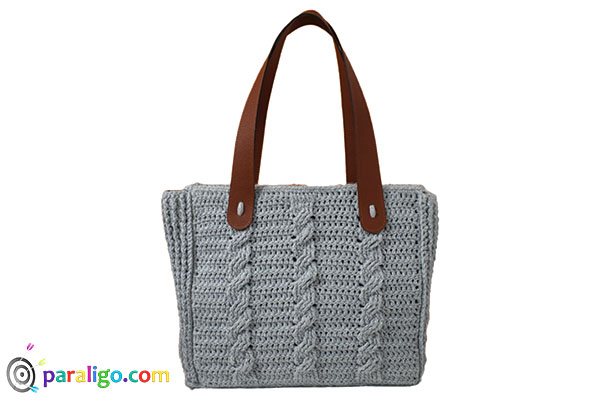
Can I crochet with knitting yarn? Can Knitting Yarn be used for crochet bags? Is there even such a thing as knitting yarn? You can, it can and it’s complicated would be the answers to the above questions. But let me explain about knitting yarn which would be my number five entry to the list that answers another critical question:
What type of yarn is best for bags?
For those of you who missed my previous articles about T-shirt Yarn, Ribbon yarn, Macrame Cord, and crochet thread that take precedence over knitting yarn, you can click on the links to get a clearer picture of what I am talking about. But let’s get back to the definition of Knitting Yarn. Or to be more accurate let’s start with the definition of yarn.
According to Wikipedia Yarn is a general term that includes all “..long continuous length of interlocked fibers, suitable for use in the production of textiles, sewing, crocheting, knitting, weaving, embroidery, or ropemaking”. Knitting yarn is a deprecated term typically used to describe types of yarn that are traditionally used for knittings such as wool, cotton, and acrylics and the rival traditional crochet medium would be the cotton thread.
Yarn is classified into two main categories based on fiber type: natural fiber yarn and synthetic. Natural fiber yarn is largely broke down into three main categories animal fibers such as Wool, Alpaca, Angora, Camel, Mohair, Cashmere, or silk, plant fibers such as cotton linen and hemp, and blends, like cotton-linen, wool-alpaca, wool-mohair, etc. Synthetic Fibers are also divided into full synthetic ones like acrylic, nylon, and polyester, and blends like wool-polyamide, cotton-rayon, etc.

Yarn can come in Cakes, Balls, Hanks, or Skeins. It also comes in different thicknesses that are called weight. Yarn weight is numbered on a 0-7 scale with zero being the thinnest and seven being the thickest. But there are also verbal descriptions used to categorize yarn weight.
So zero is also called lace, number one is called superfine or baby weight, number 3 is called fine or sport, number three is called light worsted or DK (double knit), number four is called medium worsted weight, Afgan or Aran, number 5 is called bulky or chunky, number 6 is super bulky and number 7 is called jumbo or roving.
With the great variety of bag yarns available in the market and especially in the part of the world where I happen to live, I must admit that my opinion of knitting yarn used as bag yarn was very low. Until one day I ran into a picture of a crochet cables bag on Pinterest. And then an entirely new world was revealed to me. And though knitting yarn continues to be relatively low in my list of preferences, I must admit that if wisely chosen and worked they can create stunning crochet bags.

Pros
- Soft: Thick cotton yarn excepted, most types of knitting yarn are very soft and don’t cause strain to your hands and body.
- Beginner-friendly: Wool and acrylic yarn is a great choice for inexperienced crocheters. They are easy to work and a great choice to practice crochet stitches.
- Light: Wool, acrylic, and most blend yarns are very lightweight yarns. So even if you use reinforcement the end items will also be lightweight and easy to use, something that’s very appreciated in a bag.
- Nice texture: Animal fiber yarn has a rich, beautiful texture which combined with the right stitches can produce comfy feeling snug items. Plant fiber yarns also have a lovely smooth luxurious feel.
- Affordable: Acrylic yarn and blends can be a very good solution for low budget projects.

Cons
- Stretchy: Most types of knitting yarn are stretchy and not suitable for items that need to keep their form or sustain the load. Cotton on the other hand is an inelastic fiber more suitable for uses like that.
- Splitting: Most types of knitting yarn tend to split which is a big disadvantage in crochet and especially for a beginner.
- Allergenic: Wool and other animal fiber yarns are known to cause allergies. An exception to this rule is Alpaca and other hypoallergenic solutions would be cotton and acrylics.
- Irritable: Wool is often itchy and can irritate the skin. If you want to take advantage of the warm feel of wool but lose the itchiness many blends combine coziness and smoothness.
- Pills: Animal fiber and acrylic yarn tend to felt and wool and acrylic yarns quickly show wear and pill, which is not desirable in a bag.
- Costly: Certain animal and plant fibers can be very expensive and inappropriate for big projects such as a tote bag.
Tips
- If you want to use acrylic, wool or blended yarn to crochet a bag use a hook size smaller than recommended to get a denser and sturdier fabric that will hold its form better.
- Always line the acrylic yarn bags with a sturdy fabric that will support the load and will not allow the bag to stretch.
- If you want to create a structured bag with a soft kind of knitting yarn use plastic canvas to reinforce it.

Dos
- Knitting yarn is the optimal choice for crochet patterns that imitate knitting patterns such as Crochet cables, waistcoat stitch, and front and back post stitch patterns.
- A thick inelastic cotton or cotton-blend yarn is the perfect medium to create market totes and reusable bags. Cotton has very little stretch and will not give a lot when loaded with heavy items.
- You must try cotton or acrylic yarn to make Tapestry crochet projects like Wayuu bags. The amazing variety in colors and the smooth texture of the right kind of acrylic or cotton yarn will allow you to create true works of art.
Don’ts
- Even if you do use acrylic or an acrylic blend for your bag do not use it for the handles or straps. If you don’t’ want your item to look motley by using a different fiber of similar color you can always choose from a variety of leather or wooden handles that are available on the market.
- Don’t use animal fiber (except for silk) or acrylic yarn to make an elegant crochet bag such as an evening clutch. Most of these yarns will felt and pile and they produce a texture that is more suitable for a less formal item.
- Knitting yarn is not such a great choice for items that need structure. Do not use knitting yarn for 3d shaped projects such as a macaroon bag, where you cannot use some means of reinforcement.
